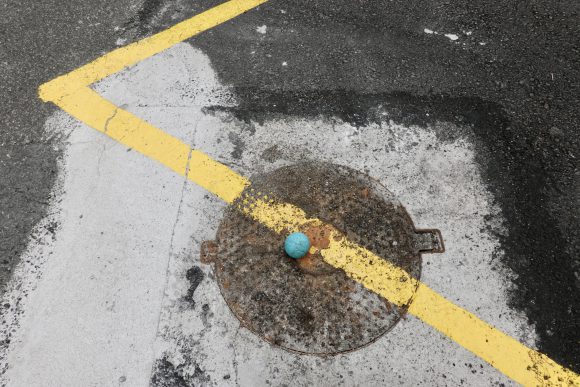Every city has its own grammar, its own choice of words, or even just a special way of quoting itself. Some read the density of places, the weight or sound, its rhythm, tones and pauses. Some read frequencies of security or fear. There are first glances, impressions and attractions and there are other readings.
“Our streets are full of signs. If you let yourself drift, you learn to read them.” writes Gero von Randow in his 2016 article “On the Forgotten Art of Strolling.”
It is easy for me to stroll, to set goals and at the same time forget them, to let myself drift from sign to sign. Step by step, I find my way into the texture of the pavement beneath my feet. Walking, without a goal, without a purpose, just moving on. To be on the move on always the same, familiar paths with time and to marvel at new things in my own neighbourhood. My own individual pace of experience, my way of looking at things, a sensory experience that perhaps even varies according to the shape of the day, and openness with which I am present. I also like to arrive somewhere a second and third time. The first orientation is there, I know the way to the river, I have a café I already like, something from which I start and can be curious again. Walking, always walking – the camera close. Seeing and photographing gives me a reason.
Daniel Schreiber devotes some thoughts to walking in his book ‘At Home’: “The French philosopher Frédéric Gros has dealt extensively with the philosophy of walking. He understands walking – strolling, hiking – as an ideal way to pause from life and, in a sense, to stop time itself. For Gros, walking is an activity that has freedom as its goal – temporary freedom from the everyday business of life, but also the fundamental freedom of forgetting oneself, such as one finds in meditation. When you reach the point, says Gros, where you no longer know how many hours you have been walking, and where it becomes insignificant where you are going and why, everything becomes secondary – what you work, who you are and where you come from. Walking, the long, extended walk, is for him, in that sense, a way of disappearing.”
So far, so relaxed and perhaps even romanticised. There are very different limitations to how people can stay and extend themselves in public space. When I’m out on my own, it tends to be during the day, not in the evening. I am not afraid in places that others experience as threatening and perhaps avoid other frequencies of the city. In my book, I dedicate the chapter “Being alone and listening to the world” to these experiences and describe a walk in Paris. When I am there with my niece some time later, we notice how differently curious we as women can be in urban spaces depending on our age. Some feel safest deep in nature, others where there are many people.
French photographer Mame-Diarre Niang is concerned with urban landscapes and her own resonance with them. She described her experience in a lecture in 2020, living in Paris where the strict regulations of the lockdown were regulated with a kind of pass and a lot of police presence. It was during this very time that George Floyd was killed in May 2020 and Mame-Diarre Felt a fundamental insecurity as a “Black Body”, in her words, from public space due to the mixture of these two events.
Not only does every city, every place have its own grammar, but also different approaches for people who inhabit or experience it. My plea: let us reclaim this freedom, with all care for our own fears and with all courage to expand ourselves. It can be an exercise to explore our own strolling, to notice where and how I feel comfortable and safe and where I want to disappear in a flash.
What are your experiences? Do you explore places along your own border? Do you pay attention to others? What is the difference with and without a camera?
“Walking meditation is useless unless you enjoy every single step.”
Thich Nhat Han: Simply Walking
Erlin Kagge, Walking. Go further
Translated with www.DeepL.com/Translator (free version)
